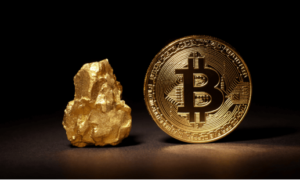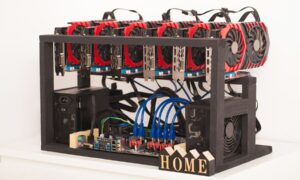It is very likely that whenever you think about mining, you also think about gold. Gold was the rush of centuries ago. At the time of its peak, millions of men left their jobs to take up positions as miners. These men were far from nonprofessionals, as you would expect. Doctors, engineers, scientist, and skilled artisans left their reputable professions to become miners.
Cryptocurrency mining is like gold mining. Unlike gold mining, however, cryptocurrency mining is not about taking an ax into a rock in the physical sense like is typical of gold mining. The axes used here and the rock where nuggets are gotten are not visible. Some knowledge of math and cryptography may be necessary to understand this but we would try the best possible to keep things simple here.
Cryptocurrencies work with a technology known as the blockchain. To understand the blockchain, you can think of it simply as a distributed ledger of transactions across a network. Everyone gets to see what is on everyone else’s page, but no one person can change what is on the block. The block comprises of the transaction chain and the blockchain itself. Blocks are Satoshi’s proposed way of solving the double-spending problem and differences in transaction time. Every block contains a list of transactions. Miners exclusively create and validate the list using specific software to solve the puzzle needed to verify that those transactions actually took place making them a part of the network. Miners use specific hardware to do the random guessing required to solve the puzzle. Their reward is a certain amount of cryptocurrency for doing what they do.
So, you can think about mining cryptocurrencies as much of a technological and mathematical process that maintains the order of blocks in the blockchain. To avoid fraud, each transaction is a reference to the previous transaction in the network. To solve the puzzle, miners use computers to do a random guess of answers. The process of guessing can take years for only one computer to complete. Although, with the number of computers in the network, it takes about 10 minutes.
Mining some cryptocurrencies can be much easier or even free. Mining Ethereum, for example, may only require a just a personal computer. The only problem is that mining of popular coins like Bitcoin may incur many costs to get GPU and energy. With modern Application Specific Integrated Circuit miners, the computational power of a computer can increase several times when compared with an ordinary mining hardware. The only problem with ASIC miners is that they are very expensive and they consume a lot of power. Miners of cryptocurrencies like Bitcoin have grappled with many problems. The heat generated from the mining hardware can be so high that cooling equipment might not easily solve the problem. The increasing difficulty of puzzles required to generate a new block reduces the possibility that miners get a solution.
The software is required to make the GPU or CPU hardware work. Client software relays data between miners and the cryptocurrency network. Mining software is also important since they drive the hardware. ASIC software might be necessary for ASIC miners.
Other good ways created to save miners the trouble of stacking their apartments with hardware include cloud mining and the mining pool. Cloud mining is a way of mining cryptocurrencies by paying a small fee to companies hosting the hardware. The idea of a mining pool is that miners would bring their speed together to increase their speed and mining efficiency while reducing cost. The reward goes to investors in the mining pool based on contribution and initial agreement.



































